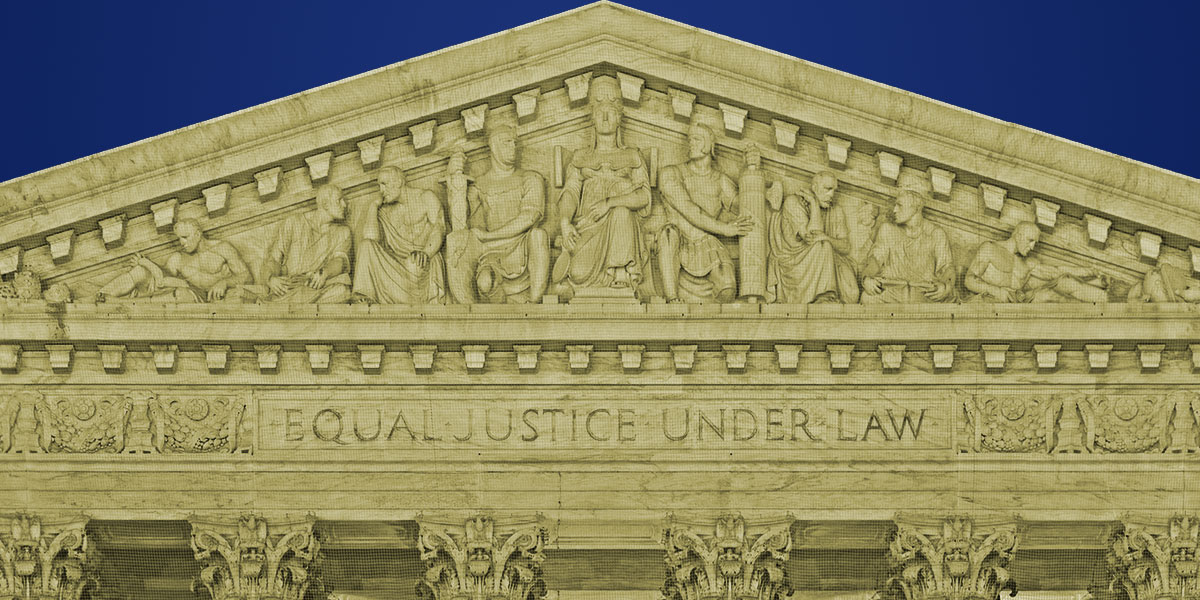At a time when government officials are justifiably limiting in-person gatherings to slow the spread of COVID-19, the public should have access to essential government activities. The Supreme Court is no exception, which is why it must finally allow cameras in its courtroom.
Responding to the health and safety concerns raised by the spread of COVID-19, the Supreme Court announced on March 12 that it would close its building to the public until further notice. Four days later, the Court postponed its March oral arguments altogether.
Once the Supreme Court begins hearing oral arguments again, it must allow the public to access them by broadcasting or releasing same-day video recordings of its proceedings. Just as every other facet of life is moving to telecommunications platforms in response to COVID-19, if the Court remains shut to an in-person audience, it should make videos of its arguments available to the public instead.
The public’s right to access court proceedings like oral arguments is one of the most basic tenets of our justice system, rooted in both the Constitution and common law. Access to courts safeguards the foundation of our democracy by ensuring the public can see how courts operate, understand how they apply the law, and hold our justice system accountable so that the public’s trust in it can be maintained. The Supreme Court recognized this principle more than 40 years ago, writing that “People in an open society do not demand infallibility from their institutions, but it is difficult for them to accept what they are prohibited from observing.”
In light of this longstanding mandate, Supreme Court arguments are open to the public and press. That means members of the public can travel to the Supreme Court building in Washington, D.C., to watch oral arguments in person (although courtroom capacity is limited). Additionally, the Court makes argument transcripts available day-of and releases audio at the end of the week.
Such access is important, but far from sufficient. The courtroom is fairly small, and those wishing to attend argument—even attorneys who are members of the Supreme Court bar—are typically required to line up early in the morning. Argument transcripts and audio recordings are not a perfect substitute for those who cannot travel to Washington D.C. or otherwise get into the courtroom. Non-verbal signals—an eye roll or disbelieving glare—can illuminate the justices’ reasoning and provide valuable insight into the Court’s ultimate decision.
While cameras are widely allowed in courtrooms at the trial and appellate levels, the Supreme Court has long resisted allowing cameras at argument.
This isn’t because the Court hasn’t considered it. Justice Kennedy has stated that videos in the Supreme Court are “inevitable.” And in 1988, the Supreme Court secretly tested cameras in the courtroom. Three Justices asked questions to Judge Timothy B. Dyk of the Court of Appeals for the Federal Circuit, who was, at that time, a media lawyer, and recorded the session to replicate a real oral argument.
But the Court didn’t decide to allow cameras to access its courtroom then, and now, more than 30 years later, almost every Justice has publicly opposed doing so. Why?
Some Justices have expressed concern about how cameras would affect the lawyers arguing, perhaps by causing them to grandstand for the television.
But this hasn’t proven to be the case in other courts that allow cameras. In a study by the Federal Judicial Center, judges and attorneys in such courtrooms agreed that cameras had little effect on trial participants. Canada’s highest court has allowed cameras in the courtroom for over 30 years, and hasn’t looked back. According to the former Canadian Chief Justice Beverly McLachlin, who served on the Canadian Supreme Court for over 28 years until retiring in 2017, the Canadian court originally had the same concerns about cameras—but it turns out that "nobody is out there trying to put on a performance." She said that she could only recall a single time where someone gave a “barnstorming kind of speech” in court that could have been directed at the cameras. And she “just told him to sit down.”
Other Justices worry about the effect that cameras would have on them—perhaps by causing the Justices to self-censor at oral argument for fear that they might say something “ridiculous” or have their words taken out of context.
But any self-consciousness about the cameras likely wouldn’t last long. Chief Justice McLachlin said that the Canadian Justices there are “just oblivious" to the cameras. “I don’t think I ever think about them in the course of a hearing . . . They’re unobtrusive." And the Court already releases audio and written transcripts of arguments, so any gaffes are hardly a secret. To the extent that the Justices worry about their words being decontextualized or manipulated, the best remedy is to release accurate video in its entirety.
Even in normal times, when individuals can watch Supreme Court arguments in person, videos would allow the greater public to form opinions about the participants, the arguments presented, and the fairness of the procedures. Given the affordability and accessibility of video technology today, there is no justification for depriving the public of access to oral argument videos any longer.
Recognizing the public’s right of access includes the right to see what happens in the courtroom—on video if not in person—is all the more urgent with the Supreme Court now barring the press and public from attending in person.











